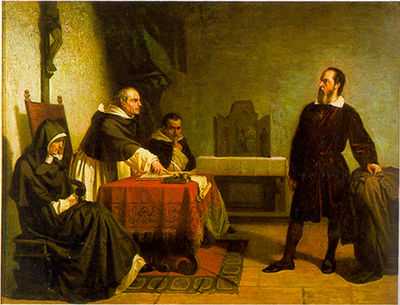Vincenzo Maculani

Vincenzo Maculani (11 September 1578 - 16 February 1667) was an Italian Catholic Cardinal, inquisitor and military architect. He was known as a severe man, harsh and without compassion, who preferred the black cappa of his order to the brighter purple he was later entitled to wear as a cardinal.[1]
Early life
Maculani was born Gaspare Maculani on 11 September 1578 at Fiorenzuola d'Arda. He trained as a bricklayer (his father's profession) before entering the Order of Preachers in Pavia in 1594 and changing his name to Vincenzo.
He studied in Bologna, becoming a lector of theology and canon law but also of practical geometry and architecture. He was appointed as an Inquisitor in Padua in 1627 and in Genoa from 1627 to 1629. While he was in Genoa he was also given the task of rebuilding the city's wall, along with Giovanni Battista Baliani. Parts of Genoa's new walls remain standing today.
The Inquisition
Thereafter, Maculani was called to Rome by Pope Urban VIII, who named him procurator-general of his order during a visit to France. He became an inquisitor under Urban's Cardinal-Nephew; Grand Inquisitor of the Roman Inquisition, Francesco Barberini.
After Galileo Galilei's falling-out with Pope Urban VIII, Maculani conducted the first interview with the scientist[2] (on 12 April 1633); the precursor to the scrutiny and persecution of the Inquisition which was to come. However, while Maculani was considered generally cold and uncaring, it was he who determined that Galileo was too old and too ill to undergo torture.[3]
Architecture in Rome
Once in the service of Pope Urban, Maculani was tasked with overseeing the Pope's vast military-centric building program.
First, Maculani added fortifications (including moats and ramparts) to the Castel Sant'Angelo. He then constructed defences around the gardens of the Cortile del Belvedere and the Porta Cavalleggeri (and its nearby church).[4]
Maculani also constructed walls at Lungara (within the Trastevere) and the Janiculum and extended them to the priory on the Aventine Hill. The walls included the Porta Portese which was finally completed in 1644.
Wars of Castro
During the Wars of Castro, Pope Urban again put Maculani's architectural skills to good use - he was sent ahead of papal forces (led by Antonio Barberini and Luigi Mattei) to oversee the fortification of various towns, palaces and castles under threat from the forces of the Dukes of Parma.[1] Contemporary John Bargrave suggested his work put him in good stead with the Pope and his family, the Barberini, but made him incredibly unpopular with the people and with local nobles. This included the Mattei (rather ironic, given one of their sons was leading papal forces) who lost half a villa to the construction of fortifications.[1]
Cardinalate
Maculani was elevated to cardinal on 16 December 1641[5] and was appointed Cardinal-Priest at the Basilica di San Clemente in 1642. He was elected Archbishop of Benevento in that year and was consecrated in the Sistine Chapel by Cardinal Antonio Marcello Barberini, brother of Pope Urban VIII.
In 1643 he was recalled to Rome to serve the Pope and resigned his archdiocese but Urban VIII died in 1644. Maculani participated in the papal conclave of 1644 which elected Pope Innocent X. Again recognising his architectural skills, the new Pope sent him to Malta to oversee construction of the new fortifications for the island, in particular the Lascaris towers. Upon his return he continued work on the Castel Sant'Angelo and the walls started during Urban's reign.[6]
He was appointed Camerlengo of the Sacred College of Cardinals between 1652 and 1653 and participated in the Papal conclave of 1655 which elected Pope Alexander VII.
Maculani died on 16 February 1667 and was buried at the Basilica of Saint Sabina at the Aventine.
References
- ↑ 1.0 1.1 1.2 Pope Alexander the Seventh and the College of Cardinals by John Bargrave, edited by James Craigie Robertson (reprint; 2009)
- ↑ Renaissance Genius: Galileo Galilei & His Legacy to Modern Science by David Whitehouse (2009)
- ↑ Retrying Galileo, 1633-1992 by Maurice A. Finocchiaro (University of California Press, 2007)
- ↑ History of the popes; their church and state (Volume III) by Leopold von Ranke (2009, Wellesley College Library)
- ↑ Catholic Hierarchy: Vincenzo (Gaspare) Cardinal Maculani
- ↑ S. Miranda: Vincenzo Maculani
|